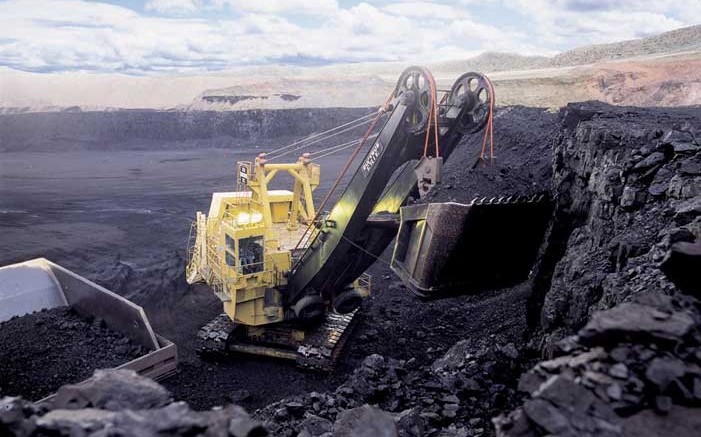VANCOUVER — In a move billed by proponents as ambitious step to address climate change and by opponents as a grand scheme destined to fail before it starts, the U.S. government has proposed a rule to cut carbon dioxide (CO2) emissions from coal-fired power plants by 30% of 2005 levels by 2030.
These power plants are the largest CO2 emitters in the U.S., accounting for 38% of total emissions, and aging coal-fired plants are the prime source. These facilities, however, generate almost 40% of the nation’s electricity.
Reliance on coal for power generation is already down because of increasing emissions regulations. But the plan unveiled June 2 by the U.S. Environmental Protection Agency (EPA) marks a dramatic step in the U.S. government’s regulation of CO2 emissions.
Within a day of its announcement, the emissions plan was labelled variously as “momentous,” “critical” and “a dagger in the heart of the American middle class” in statements and editorials. One editorial called the pending battle “the Super Bowl of climate politics,” and the attorney general of Oklahoma vows to challenge the new rules in court.
The plan mandates that by 2030 the U.S. reduce emissions from coal-fired power plants to 30% less of what was produced in 2005. Each state would have a different target, though details of this system are not finalized.
The foundation for this plan was laid in 2007 when the U.S. Supreme Court classified carbon dioxide as an air pollutant under the Clean Air Act, which affirmed the EPA’s authority to regulate CO2 emissions. But before the environmental agency could act on the decision, the court requested a determination as to whether carbon emissions endanger public health and the environment.
In late 2009 the EPA issued its “endangerment finding” stating that atmospheric carbon emissions were a danger to public health and the environment, which meant the it had the power to regulate CO2.
If the goal is to reduce carbon dioxide emissions, America’s coal-fired power plants are an obvious target. As mentioned, they account for almost 40% of the country’s emissions. The average age of America’s coal-fired fleet is 42 years.
To reduce emissions, plants can be shut down, upgraded or switched from coal to natural gas. Alternately plant operators could develop renewable energy sources “outside the fence” — meaning outside the plant site.
Given the costs and options involved, plant operators and state regulators will need time to figure out how to comply.
The EPA plans to finalize the regulations in mid-2015. After that, U.S. states will have a year to design their implementation plans, or two years if they work with other states.
With reams of undetermined details and wildly divergent energy price projections, what the rules will cost is open for debate. The U.S. Chamber of Commerce says the rules will boost energy prices, and add $50 billion in annual costs to American households and businesses. On the flip side, the Natural Resource Defense Council says the regulations will save money overall through new industries and health care savings.
The EPA is more aligned with the latter emphasis on avoiding costs associated with climate change, and reaping the health benefits of shutting down old coal plants. By reducing traditional air pollutants like sulphur dioxide and soot, the EPA expects to prevent between 2,700 and 6,600 premature deaths, and as many as 150,000 asthma attacks.
EPA administrator Gina McCarthy, who announced the plan in Washington, D.C., says that any rise in electricity prices would be in line with “a gallon of milk a month.” She also said the changes would help investors, entrepreneurs and labourers, as low-carbon technologies are developed and built.
“The most costly thing of all we can do is nothing,” McCarthy said.
North of the border, Ontario was the first major jurisdiction in North America to completely phase out coal-fired power plants. Partly due to reduced energy as a result of a shrinking manufacturing base, it was able to shutter its coal plants and embrace European-style policies like subsidies for green energy.
Today the province is free of coal-fired power and the air in southern Ontario is noticeably cleaner. But electricity prices have doubled, and it is the most expensive province or state on the continent to buy power and the provincial government has been forced to subsidize household energy bills.
That’s the energy production side of the equation, but in the U.S. a move away from coal also threatens the economic viability of thermal coal mines. Falling thermal coal prices have already forced several U.S. thermal coal mines to suspend operations or close. If domestic demand drops further because of these regulations, several coal-centric states will struggle further.
Kentucky and West Virginia are the most vulnerable. More than 90% of the electricity in both states comes from coal and the two nations place first and second in terms of reliance on coal mining employment. Wyoming, Indiana, and Missouri rely on coal for more than 80% of their power, and also mine significant amounts of thermal coal.
For a U.S. president trying to leave an environmental legacy that’s being opposed by many in the U.S. Senate and House of Representatives, the new emissions target is a bold but supportable move. For one, EPA regulations don’t need direct political endorsement. For another, the Obama administration says it puts the U.S. on track to meet its Copenhagen pledge to cut emissions by 17% by 2020.
But don’t expect the coal lobby to go down without a fight.


Be the first to comment on "US gov’t targets coal-fired power plants to cut CO2 emissions"